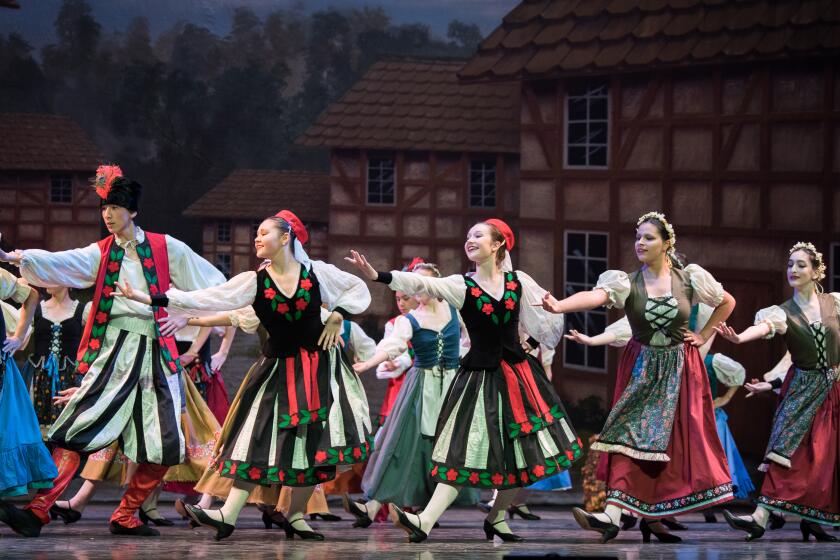Two RB groups against high-speed train design
By Elizabeth Marie Himchak
A co-written letter this month by the Rancho Bernardo Community Council and Planning Board are the groups’ latest effort to modify — or stop — a high-speed train set to travel through Rancho Bernardo by 2020.
The endeavor, which proponents estimated in late 2009 to cost $40 billion to $45 billion, is significantly under projected, just one of many flaws the local groups said they perceive.
In the letter, signed by Teri Denlinger (board’s chairwoman) and Robin Kaufman (council’s president), the groups questioned a $53.75 million per mile cost “when virtually all other heavy rail and light rail systems cost as much as $175-$225 million per mile in current day dollars. This estimate alone will result in the cost to build the entire 800 mile network at over $200 billion.”
The high-speed train, a first for the United States if built, will connect California’s metropolitan areas, including San Francisco, Sacramento, Los Angeles and San Diego.
If trains travel at their anticipated 220-plus miles per hour, a trip between San Diego and San Francisco could take less than four hours, a San Diego/Sacramento journey around three-and-a-half hours and traveling between San Diego and Los Angeles could max at one hour 18 minutes, according to the California High Speed Rail Authority.
CHSRA claims the benefits include decreased traffic congestion and pollution, and creation of 45,250 jobs in the San Diego region alone by 2030.
But anticipated benefits statewide will be detrimental to Rancho Bernardo, which will literally be split in two by the rail system. Plans call for an elevated track alongside Interstate 15.
The groups detailed 10 reasons why the project’s Inland Corridor alignment as described in the project’s Preliminary Alternatives Analysis report is faulty and should be abandoned for the originally proposed coastal route.
Besides being a blight to Rancho Bernardo, they said an inland route is more costly due to the region’s terrain and recently constructed freeway bridges and retaining walls. Overcoming these will require “unusually high elevated structures ... placing the guideway too close to many houses and businesses.”
The coast is more appropriate, it was written, because of its relatively flat grade.
Elevating the train to overcome existing obstacles will also create excessive noise, vibration and “dust trails” in Rancho Bernardo when trains travel through this section at 120-plus miles per hour.
The narrow corridor between the west and east sides of Rancho Bernardo means the train will be placed extremely close to homes and businesses, therefore lowering property values, according to the letter.
This does not include the detriment to at least 20 homes and businesses along the freeway which according to some of the groups’ members could be taken by eminent domain if comments they heard at a CHSRA open house last spring are true.
In addition, the rail’s structure will also create an “unsightly” visual obstruction in Rancho Bernardo when built 75 feet above the existing freeway elevation.
“This route is considered a scenic corridor and the presence of high guideway structures will destroy this unique regional characteristic,” the groups wrote.
As for the projected cost to not only build but operate the system, the groups called the ridership projections “unrealistic” and “exaggerated,” said the announced cost to ride is “illogical” and “unreasonably low,” the project lacks a comprehensive financial plan and has announced “construction costs that are unreasonably low in order to justify building the system.”
They wrote, “The cost to construct gets even higher (than our estimated $200 billion) when an escalation factor is applied to the actual year of construction, 2018 and beyond. Amtrak’s own estimate for a similar high-speed rail system for the Northeast Corridor has been submitted at a cost of $117 billion for just over 400 miles with an average cost of $264 million (per) mile. We believe this is a more reasonable and true estimate.
“Working the math and applying this estimate against an 800-mile network shows the flaws in the cost to build estimate provided by the CHSRA of $42.5 billion.”
They questioned how the cost will be funded considering the state’s financial situation.
The project is supposed to be paid for by a $40 billion bond voters approved in November 2008 through Proposition 1A and utilize federal stimulus, state and local government and private sector funds.
Proponents claim operating costs will be covered by the projected 88 million to 117 million passengers annually statewide by 2030, which will decrease airplane and auto traffic.
The board and council are requesting the project’s current plans be abandoned. If not, then they want the CHSRA to “develop more reasonable estimates that would serve to demonstrate true costs in all categories and adverse impacts so a clear determination can be made as to whether the project can truly be funded as currently configured with the funds approved by the taxpayers in 2008.”
For project details, including the Los Angeles-San Diego section, go to www.cahighspeedrail.ca.gov.





